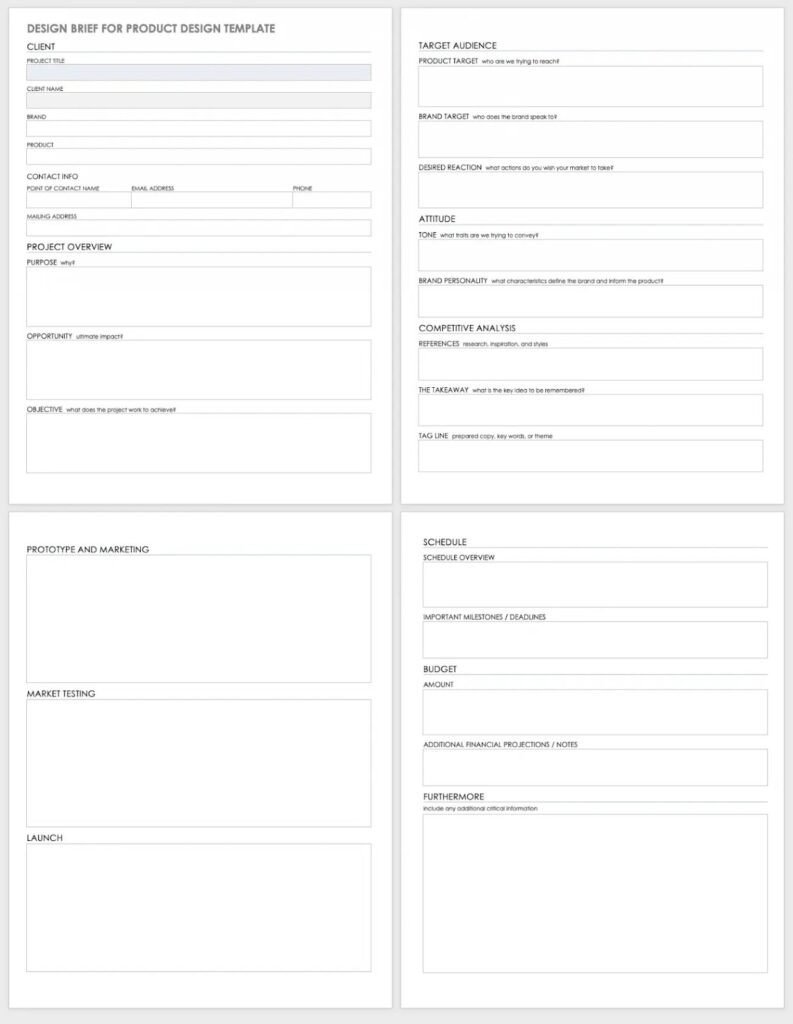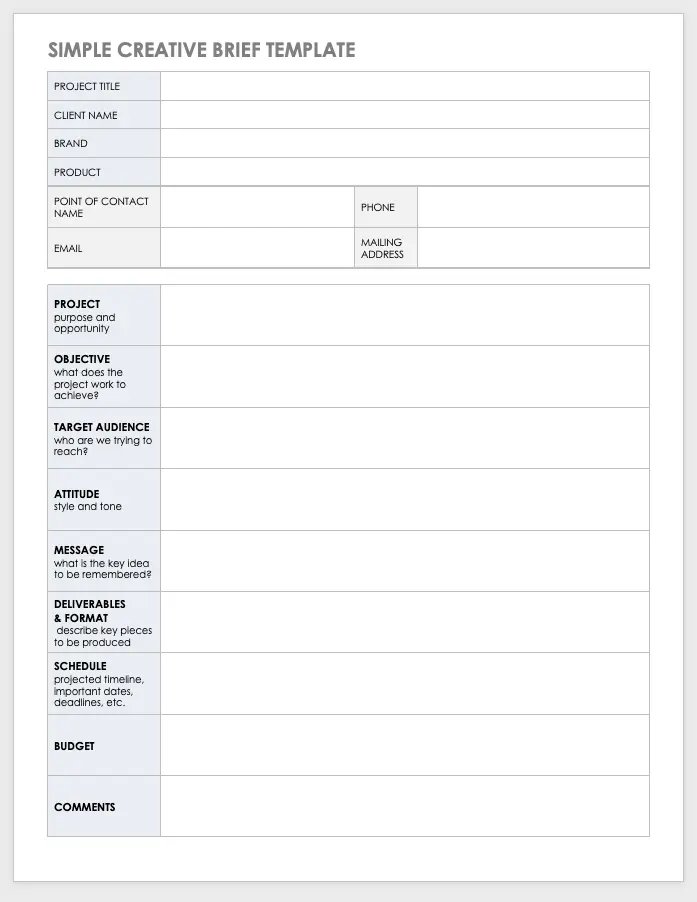Design Brief: What Is It & How to Make One (With Examples)
In the world of design, whether it’s graphic design, web design, or product design, a design brief plays a crucial role in ensuring the success of a project. By providing valuable guidance, it ensures that the entire team shares a common understanding of the project’s objectives, goals, and requirements.
In this article, we’ll explore the importance of a design brief and provide a step-by-step guide on how to create the perfect brief for your next project. We will also include examples to illustrate the key components of a well-crafted design brief.
What is a design brief?
A design brief is a document that lays out the objectives, goals, and expectations of a design project. It serves as a roadmap for designers, helping them understand the client’s vision and ensuring that everyone is on the same page right from the start.
Suggested reading: How to Develop a Product Vision
Design brief example
Looking at design brief examples can spark creativity and help designers come up with innovative ideas and approaches. These examples provide valuable guidance on best practices and give you a visual representation of what a well-structured brief should look like.
Here is an example of a simple design brief template that you can use to craft your very own design brief:
This versatile design brief template is perfect for a wide range of design projects, be it graphic design, web design, or product design. With its user-friendly format, it simplifies the process of gathering information and ensures that all essential information is brought together in one convenient location.
Should I customize a design brief template?
When it comes to design projects, using a design brief template is a fantastic way for designers to collaborate and gather all the necessary information in one convenient place.
However, customizing the template to fit the unique requirements of different projects can bring even more benefits. By adding your personal touch and adapting the template creatively, you can effectively address specific challenges and goals, ultimately boosting the outcome and client satisfaction.
Let’s take a look at an example: a design brief template specifically designed for a product design project.

Word | Google Docs
This template is tailor-made for product design, focusing on how the product can provide meaningful and relevant experiences for its users.
Why is a good design brief so important?
A good design brief is incredibly important for several reasons, this includes:
- Clear communication: A brief improves design communication and ensures that everyone understands the project’s requirements and goals. This minimises the potential for miscommunication and costly revisions.
- Aligning expectations: A design brief helps align the expectations of the client and the designer and outlines the scope of the project, deliverables, and timelines. This ensures that everyone is on the same page from the get-go.
- Efficient workflow: A good design brief gives designers a clear roadmap to follow, allowing them to focus their efforts on meeting the client’s specific needs. This helps to streamline the entire design process and improve efficiency.
- Client satisfaction: Ultimately, a good design brief leads to client satisfaction as designers are more likely to deliver designs that meet or exceed expectations.
In summary, a well-crafted design brief acts as a cornerstone for successful design projects. It facilitates clear communication, aligns expectations, promotes efficiency, and paves the path to client satisfaction.
What are the key components of a design brief?
A good design brief will typically include the following key components:
- Project overview: The nature of the design work required, the context in which it will be used, and any specific challenges or constraints.
- Objectives and goals: What you hope to achieve through the design.
- Target audience: The target audience or user group for the design, including details about their demographics, preferences, and needs.
- Competition and market analysis: Key competitors in the market landscape.
- Brand guidelines: This should include the brand logo, color palette, and any other specific visual elements that need to be incorporated into the design.
- Deliverables and timeline: The deliverables expected from the designer and the timeline for the project.
How to write a design brief in 5 easy steps
Creating a well-written design brief requires careful planning and attention to detail. Here are five essential steps in writing an effective design brief:
Step 1: Gather project information
Before you start writing the design brief, gather as much information as possible about the project, including objectives, goals, and constraints.
Conduct interviews with stakeholders, review existing materials, and analyze the market and competition. The more information you have, the better you can define the project’s requirements.
Step 2: Define your target audience
To create a design that resonates with your user, it’s crucial to gain a deep understanding of your target audience. Conduct in-depth research to uncover valuable insights about their demographics, preferences, and needs.
By truly understanding your audience, you can tailor the design to effectively communicate with them, capturing their attention and engaging them in a meaningful way.
Suggested reading: How to Find Your Target Audience
Step 3: Outline project scope and deliverables
Clearly define the scope of the project and specify what is included and what is not. Establishing clear boundaries will help prevent scope creep and ensure that the project stays focused and meets client expectations.
According to a study by the Project Management Institute, nearly 50% of projects experience scope creep, and only 57% finish within budget while only 51% are finished on schedule. A well-crafted design brief can help your design team avoid these common pitfalls.
Step 4: Establish objectives and constraints
Set clear project objectives and goals. Define measurable outcomes and identify any constraints or limitations, such as budget, timeline, or technical requirements.
TIP: When defining the timeline and budget, it’s important to ensure they are realistic and mutually agreed upon. This will help to prevent any future conflicts and ensure that the project runs smoothly.
Step 5: Structure and format the design brief
Finally, organize the design brief in a clear and concise format. Use headings, bullet points, and visuals to make it easily readable. Include relevant brand guidelines and examples to support the information.
Tips for creating the perfect design brief
- Keep your brief short and concise: Designing something already takes a significant amount of time, so no one should have to spend hours trying to understand a poorly formatted design brief. Make sure that your design brief is well-structured, visually appealing, and easy to read.
- Make it interactive: Creating an interactive design brief can enhance the overall experience for both designers and clients. Use media like graphs, images, and interactive features to provide a visual representation of ideas and capture the attention of the reader.
- Collaborate with stakeholders: Involve all relevant stakeholders in the design brief creation process. This could include the client, marketing team, and product managers. Encourage open communication and gather valuable insights from different perspectives.
- Include brand guidelines: If applicable, provide brand guidelines, including the brand logo, color palette, and any other specific visual elements that need to be incorporated into the design. This will help the designer better understand the visual direction and ensure consistency with your brand’s identity.
- Review and revise: Go through the design brief and give it a thorough review to make sure it’s clear, complete, and accurate. Check that you’ve included all the key information and that it matches the project requirements. Make any necessary edits or changes to improve the design brief before it is finalized.
- Ask for feedback: Share the design brief with the client or stakeholders and ask for their feedback. Take their input into account and see if they have any suggestions or if they need any clarifications. Once everyone is happy, get their final approval before moving on to the design phase.
Final thoughts
A well-written design brief is a powerful tool that sets the foundation for a successful design project. It ensures clear communication, aligns expectations, improves efficiency, and ultimately, leads to higher client satisfaction.
By following the steps outlined in this article, you can create an effective design brief that will guide the entire design process. So, invest time and effort into creating a detailed design brief, and watch as it becomes an invaluable tool in your design process.



